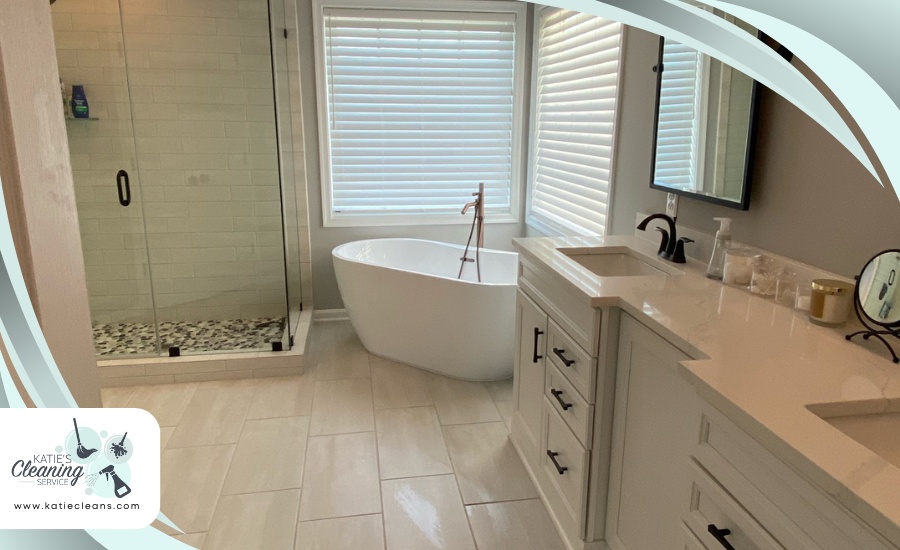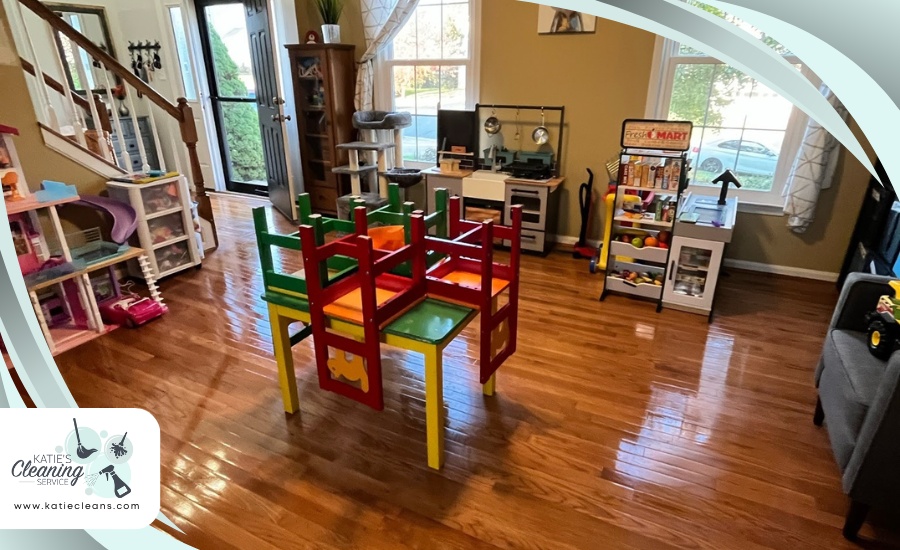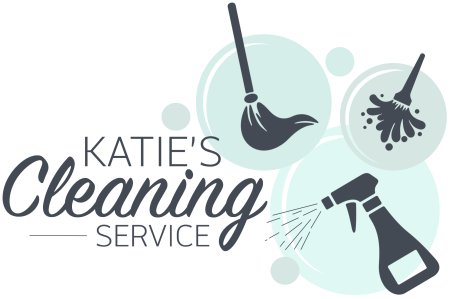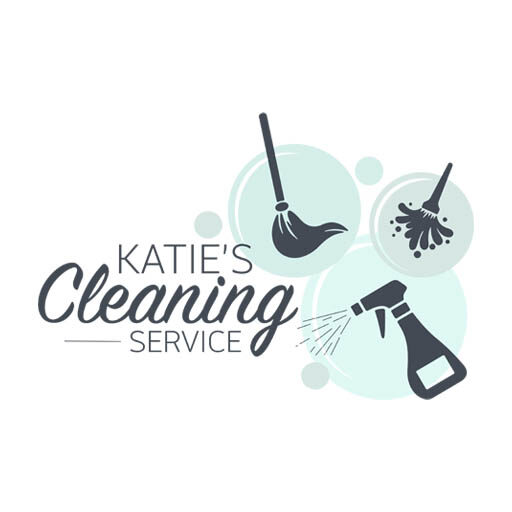Feeling overwhelmed by the state of your home and unsure where to start cleaning your house? You’re not alone. Many of us face the daunting task of tidying up a messy home but struggle with taking the first step. This challenge often leads to procrastination, and the situation becomes even more overwhelming. Yet, knowing exactly where to begin can transform this seemingly enormous task into a series of manageable, satisfying steps. In this article, we’ll show you a strategic approach to start your cleaning process, including setting up a recurring cleaning service. This ensures you clean efficiently and keep your home environment serene and orderly.
Here’s a sneak peek of what you’ll discover:
- The Art of Prioritizing: Learn how to identify the areas that need your attention first to make an immediate impact.
- Decluttering Tactics: Gain insights into simplifying your space for a smoother cleaning journey.
- Deep Cleaning Secrets: Uncover expert tips for easily tackling the toughest rooms.
- Maintaining a Clean House: Find out how to keep your home clean with minimal effort daily.
Understanding Your Cleaning Goals
Before diving into the cleaning task, it’s crucial to set clear and achievable goals. Understanding what you aim to accomplish will not only guide your efforts but also provide you with a sense of direction and purpose. Whether your goal is to declutter your space, deep clean the kitchen, or simply maintain a tidy home, having a clear objective in mind will make the cleaning process more efficient and less overwhelming.
Setting Realistic Expectations
When it comes to setting expectations for your cleaning project, realism is key. It’s easy to get ambitious and plan to overhaul your entire home in a single day, but this often leads to frustration and burnout. Instead, consider what is genuinely achievable, given your time and resources. Here’s a guide to help you set practical cleaning goals:
- Assess your time: Look at your schedule and realistically decide how much time you can dedicate to cleaning each day or week.
- Prioritize tasks: Only some areas of your house need the same level of attention. Identify the rooms or spaces that require urgent cleaning and start there.
- Break tasks into smaller steps: Large tasks can seem daunting. Break them down into more manageable chunks to avoid feeling overwhelmed.
- Set deadlines: Give yourself specific deadlines for each cleaning task. This can help keep you on track and motivated.
- Seek help when needed: Remember, it’s okay to ask for help. Whether it’s enlisting family members or considering a professional cleaning service, don’t hesitate to seek support.
Identifying Key Focus Areas
To help streamline your cleaning routine, consider these tips for pinpointing areas that need the most attention:
High-Traffic Zones: Identify areas in your home that see the most activity. These spots typically accumulate more dirt and clutter.
- Entryways and mudrooms
- Living rooms and family rooms
- Kitchen floors and countertops
Dust and Allergen Collectors: Focus on areas prone to collecting dust and allergens that can affect air quality.
- Bookshelves and entertainment centers
- Window treatments and blinds
- Under and behind furniture
Germs and Bacteria Hotspots: Pay special attention to areas that might harbor germs and bacteria.
- Bathroom sinks, toilets, and showers
- Kitchen sinks and appliances
- Doorknobs, light switches, and remote controls
Clutter Accumulation Points: Identify spots where clutter tends to build up, making cleaning more challenging.
- Home offices and desks
- Entryway tables and nightstands
- Laundry rooms and closets
Seasonal Concerns: Consider areas that require attention based on the season, such as outdoor spaces in the summer or mudrooms in the winter.

Step 1: Planning and Preparing Your Cleaning Strategy
The first step towards a cleaner home is developing a clear and practical cleaning strategy. This approach helps you organize your tasks efficiently, ensuring that you don’t miss any critical spots. Creating a custom cleaning checklist is paramount in this strategy. It acts as a roadmap, guiding you through each step of the cleaning process tailored to your home’s unique needs. By planning ahead, you can allocate your time and resources more effectively, leading to a more thorough and stress-free cleaning experience.
Creating a Custom Cleaning Checklist
A personalized cleaning checklist is your best ally in tackling the chaos head-on. This list should reflect the specific needs of your home, focusing on areas that require the most attention. Here’s how to create an effective checklist:
- Evaluate each room: Walk through your home and note the areas that need the most work. Pay special attention to high-traffic areas like the kitchen and bathroom.
- Categorize tasks: Break down your tasks into categories such as decluttering, deep cleaning, and maintenance. This makes your checklist easier to manage.
- Set priorities: Identify which areas you should clean first. Prioritizing helps you see immediate results, motivating you to keep going.
- Include supplies: List the cleaning supplies required for each task. Knowing what you need in advance prevents last-minute runs to the store.
- Allocate time frames: Estimate how much time each cleaning task will take. Setting realistic time frames helps you plan your cleaning sessions more effectively.
Essential Cleaning Supplies and Tools
Here’s a comprehensive list to guide you through selecting the necessary supplies and tools for a thorough cleaning:
| Supplies/Tools | Purpose |
| Microfiber Cloths | Dusting and polishing surfaces without leaving lint or streaks. |
| Broom and Dustpan | Sweeping floors in non-carpeted areas. |
| Vacuum Cleaner | Removing dust, pet hair, and debris from carpets and upholstery. |
| Mop and Bucket | Cleaning and disinfecting hard floor surfaces. |
| Sponges | Washing dishes and wiping down kitchen and bathroom surfaces. |
| Scrub Brushes | Tackling tough grime and stains in kitchens and bathrooms. |
| All-Purpose Cleaner | Cleaning various surfaces throughout the home. |
| Glass Cleaner | Ensuring windows and mirrors are streak-free. |
| Disinfectant | Sanitizing areas to kill germs and bacteria. |
| Baking Soda | A gentle abrasive cleaner and deodorizer. |
| White Vinegar | Cutting through grease, removing limescale, and acting as a natural disinfectant. |
| Rubber Gloves | Protecting your hands during cleaning tasks. |
| Duster (extendable) | Dusting high and hard-to-reach areas. |
| Toilet Brush and Cleaner | Cleaning and disinfecting the toilet bowl. |
Step 2: Decluttering Before Cleaning
Embarking on your cleaning journey begins with the crucial step of decluttering. This process not only clears physical space but also promotes a more efficient and effective cleaning experience. Decluttering before cleaning serves as the foundation for a deeper clean, allowing you easier access to surfaces and spaces that need attention. It transforms overwhelming chaos into manageable tasks, setting the stage for a truly refreshed home.
Strategies for Effective Decluttering
The art of decluttering requires a systematic approach to sorting, donating, and discarding items. By following these techniques, you can declutter your space efficiently and make your cleaning process much smoother.
- Sort with a System: Create categories for your items, such as keep, donate, discard, and maybe. This helps in making decisive actions about what stays and what goes.
- One Room at a Time: Tackle one room or area at a time to avoid feeling overwhelmed. This focused approach allows for more thorough decluttering and cleaning.
- Use Boxes or Bins: Having boxes or bins for each category simplifies the sorting process. Label them clearly to avoid confusion and streamline your decluttering efforts.
- Be Ruthless with Clutter: Challenge yourself to let go of items you haven’t used in over a year. If it doesn’t serve a purpose or bring joy, consider letting it go.
- Donate Responsibly: For items that are still in good condition but no longer needed, donation is a great option. Research local charities or organizations that can give your items a second life.
- Discard Responsibly: Properly dispose of items that are no longer usable. Look into recycling options for materials like electronics, paper, plastics, and textiles.
Organizational Systems to Keep Clutter at Bay
Effective organizational systems are tailored to your lifestyle and the layout of your home. Here are some recommendations for creating a sustainable order:
- Use Clear Storage Solutions: Opt for transparent containers for easy identification of contents. This is especially useful for storage areas like closets or pantries.
- Label Everything: Labeling shelves, boxes, and bins make it easier for everyone in the household to know where things belong, facilitating the maintenance of order.
- Implement Drawer Dividers: Drawer dividers can help keep items separated and organized, particularly for small items in kitchens, bathrooms, and desks.
- Adopt a One-In, One-Out Rule: Whenever a new item comes into your home, an old one should leave. This principle prevents the accumulation of unnecessary items.
- Designate a Drop Zone: Create a specific area near the entrance for items like keys, mail, and shoes. This helps prevent potential clutter from spreading throughout the house.
- Maximize Vertical Space: Use wall-mounted shelves, hooks, and racks to keep floors clear and items out of the way. Vertical storage solutions are great for small spaces.
- Regular Mini-Declutter Sessions: Set aside time each week to go through common clutter areas. Regularly revisiting spaces helps prevent the build-up of clutter.
Step 3: Tackling the Hardest Rooms First
Once you’ve decluttered and set up organizational systems, it’s time to focus on cleaning the hardest rooms in your home. Starting with the most challenging areas not only makes the rest of the cleaning process feel more manageable but also provides immediate, gratifying results. The kitchen, often the heart of the home, is usually one of these daunting spaces due to its frequent use and the presence of grease and food residues.
Kitchen Deep Cleaning Techniques
Deep cleaning of the kitchen requires a systematic approach to tackle greasy surfaces, hard-to-reach areas, and appliances that have been neglected. Here’s a step-by-step guide to ensure your kitchen is sparkling clean:
- Start with the Refrigerator: Empty it, discard expired items, and clean the shelves and drawers with a mild detergent. Don’t forget to wipe down the exterior, including the top and back.
- Degrease Cabinets and Countertops: Use a mixture of warm water and degreasing dish soap or a vinegar solution to wipe down all surfaces. Pay special attention to areas around the stove and handles.
- Clean the Oven and Stove Top: Apply an oven cleaner and let it sit according to the instructions before scrubbing. For the stovetop, remove the burner grates and knobs to clean them separately.
- Tackle the Sink and Faucets: Scrub the sink with baking soda and vinegar for a natural clean. Use a toothbrush to remove the buildup around the faucet.
- Refresh the Dishwasher: Run it empty with a cup of white vinegar placed on the top rack to clean and deodorize.
- Focus on Floors and Baseboards: Sweep or vacuum the floor, then mop with a suitable cleaner for your floor type. Wipe down baseboards to remove dust and scuffs.
Bathroom Sanitation and Cleaning
To maintain the highest standards of cleanliness and health in your bathroom, follow these best practices for disinfecting and cleaning:
- Start with High-Touch Surfaces: Disinfect handles, knobs, and switches first. Use a disinfectant spray or wipes for effective germ removal.
- Clean the Toilet Thoroughly: Apply a toilet bowl cleaner and let it sit for a few minutes. Scrub the bowl with a brush, including under the rim. Don’t forget to disinfect the seat and exterior surfaces.
- Tackle Shower and Tub: Remove soap scum and mildew with a bathroom cleaner designed for these surfaces. For tough grime, a mixture of baking soda and vinegar can be effective.
- Disinfect the Sink and Countertops: Wipe down the sink, faucet, and countertops with a disinfectant. Pay special attention to areas that accumulate water or soap.
- Refresh Shower Curtains and Mats: Wash shower curtains and mats regularly to prevent mold and mildew buildup. Replace them if necessary.
- Mop Floors Last: After cleaning everything else, mop the floor with a disinfectant floor cleaner to ensure you’re not spreading dirt and germs around.

Step 4: Dusting, Vacuuming, and Mopping Through Your Home
Once you’ve tackled the major challenges in the kitchen and bathroom, it’s time to focus on dusting, vacuuming, and mopping throughout your home. These tasks are essential for removing dust, allergens, and other particles that accumulate on surfaces and in the air. Properly executed, they not only improve the cleanliness of your home but also its air quality, making your living space healthier and more comfortable for everyone.
Dusting Without Spreading Allergens
Dusting is more than just wiping surfaces; it’s about effectively capturing dust and allergens without spreading them further into your home. Here are some tips for dusting effectively while minimizing allergens:
- Use Damp Cloths: Dry dusting can kick up particles back into the air. Use damp cloths or specially designed dusters that trap and lock in dust.
- Top-to-Bottom Approach: Start dusting from higher surfaces and work your way down. This ensures any dust that falls will be captured as you clean lower areas.
- Microfiber is Key: Microfiber cloths are designed to pick up and hold onto dust without the need for cleaning chemicals, which can aggravate allergies.
- Tackle Hard-to-Reach Areas: Dust often accumulates in overlooked spots such as the tops of ceiling fans, light fixtures, and bookshelves. Use extendable dusters to reach these areas.
- Regularly Clean Bedding and Curtains: These fabrics can harbor a significant amount of dust and allergens. Wash them regularly in hot water to keep them fresh and clean.
- Vacuum With a HEPA Filter: When it comes to vacuuming, use a vacuum equipped with a HEPA filter to trap as much as 99.97% of dust, pollen, and pet dander particles.
Vacuuming and Mopping Best Practices
Vacuuming and mopping correctly can significantly improve the cleanliness of both carpet and hardwood floors. Here are some techniques and tips for efficient vacuuming and mopping:
- Pre-Vacuuming Preparation: Remove small objects from the floor that could obstruct the vacuum cleaner. For areas with furniture, consider using a vacuum with attachments to reach under and around these items.
- Vacuuming Technique: Use slow, overlapping strokes to ensure you pick up as much dirt and dust as possible. For carpets, adjust the vacuum’s height setting to suit the pile thickness for optimal suction.
- HEPA Filter Usage: Always use a vacuum with a HEPA filter, especially if you have pets or allergies. This ensures the finest particles are trapped and not released back into the air.
- Mopping Hardwood Floors: When mopping hardwood floors, use a damp mop rather than a wet one to prevent water damage. Opt for a cleaner that’s specifically designed for hardwood.
- Mopping Tile and Laminate Floors: For tile and laminate, you can use a slightly more wet mop. Use a cleaner appropriate for the floor type. Pay special attention to grout lines where dirt tends to accumulate.
- Drying Floors: After mopping, it’s important to dry floors promptly to prevent slips and avoid water spots. Microfiber mops or cloths are great for quickly absorbing excess moisture.
Detailing for a Professional, Clean Feel
Focusing on specific elements can elevate the cleanliness of your home to professional standards. Here are some tips to help you add those important finishing touches:
- Wipe Down Baseboards: Dust and scuff marks on baseboards can make even clean rooms look neglected. Use a damp cloth to gently wipe them down.
- Clean Light Fixtures and Ceiling Fans: These often overlooked areas can collect a surprising amount of dust. A quick dusting can brighten a room and improve air quality.
- Polish Metal Fixtures: Faucets, door handles, and cabinet hardware can accumulate fingerprints and water spots. Polishing these elements can add sparkle to your rooms.
- Refresh Window Sills and Frames: Dust and debris can gather on window sills and in the tracks. Cleaning these areas not only improves appearance but can also enhance window function.
- Spot Clean Walls and Touch-up Paint: Marks on walls can detract from your home’s beauty. Gentle spot cleaning or a quick touch-up with paint can make walls look pristine.
- Fluff Pillows and Straighten Decor: Re-arranging and straightening throw pillows, blankets, and decorative items can revive your living spaces and make them more welcoming.
Refreshing Your Space
Using natural fragrances is a gentle yet effective way to infuse your living areas with a clean and inviting aroma. Here are some tips on how to achieve this:
- Essential Oil Diffusers: Diffuse essential oils like lavender, lemon, or peppermint to create a fresh, calming atmosphere. Each oil has unique benefits, from promoting relaxation to enhancing focus.
- Homemade Air Fresheners: Combine water, alcohol, and your favorite essential oils in a spray bottle. Use this natural spray to refresh fabrics and air.
- Simmer Pots: Simmer water in a pot and add citrus slices, cinnamon sticks, and cloves. This method not only scents the air but can also add humidity to dry rooms.
- Baking Soda Deodorizers: Mix baking soda with a few drops of essential oil and sprinkle it on carpets and rugs. After a few minutes, vacuum it up to remove odors and leave a subtle scent.
- Natural Potpourri: Create your own potpourri with dried flowers, citrus peels, and spices. Display it in open bowls around your home for a decorative and fragrant touch.
Maintaining Your Clean Home
Maintaining the pristine condition of your home after a deep clean is essential for ensuring the space remains welcoming and hygienic. Regular upkeep through daily and weekly routines can significantly reduce the need for frequent, intensive cleaning sessions, making the task of keeping your home clean more manageable and less time-consuming. Establishing a set schedule for these routines not only helps in maintaining cleanliness but also contributes to a healthier living environment for you and your family.
Daily and Weekly Routines for Upkeep
To ensure your home stays clean and organized between major cleaning sessions, consider incorporating the following simple routines into your daily and weekly schedules:
Daily Cleaning Tasks
- Wipe down kitchen counters and dining tables to prevent the buildup of crumbs and spills.
- Do a quick sweep or vacuum of high-traffic areas to keep floors free of dirt and debris.
- Manage clutter by ensuring items are returned to their designated spots at the end of the day.
- Clean and disinfect high-touch surfaces like doorknobs, light switches, and faucet handles to minimize the spread of germs.
Weekly Cleaning Tasks
- Dust all surfaces, including furniture, shelves, and electronics, to keep allergens at bay.
- Thoroughly vacuum carpets and mop floors to remove accumulated dirt and grime from the week.
- Clean bathrooms, including toilets, showers, and sinks, to maintain sanitation and prevent mold growth.
- Tackle one deep cleaning task each week, such as cleaning the refrigerator, to gradually maintain the cleanliness of less frequently used areas without becoming overwhelmed.
Involving the Family in Cleaning Tasks
To ensure that cleaning becomes a joint endeavor, here are some effective strategies:
- Assign Specific Tasks: Assign tasks based on age, ability, and interest. Younger children can handle simpler tasks like picking up toys, while older members can take on more complex tasks such as vacuuming or doing laundry.
- Create a Cleaning Schedule: A visible schedule that outlines who does what and when helps keep everyone accountable. Rotate tasks regularly to prevent monotony and ensure fairness.
- Set Clear Expectations: Make sure each family member knows what’s expected by providing clear instructions and standards for each task. This minimizes confusion and ensures tasks are completed properly.
- Incentivize Cleaning: Introduce rewards for completing tasks or for extra effort put into cleaning. Rewards can range from extra screen time for kids to a family outing.
- Make It Fun: Incorporate music, challenges, or games into cleaning time to make it more enjoyable. A little fun can significantly increase motivation and participation.
- Lead by Example: Demonstrate a positive attitude towards cleaning and actively participate in tasks. Seeing parents involved can inspire children to contribute without fuss.
- Regular Family Meetings: Hold meetings to discuss the cleaning schedule and any changes needed or to address any issues. This keeps communication open and allows everyone to feel heard.

Advanced Cleaning Tips and Tricks
Embarking on a thorough home cleaning doesn’t mean you have to rely on harsh chemicals. Incorporating advanced cleaning tips and tricks into your routine can enhance your cleaning effectiveness while being kinder to the environment. Among these, using eco-friendly cleaning solutions stands out as a powerful strategy. Not only do these green alternatives ensure a spotless home, but they also safeguard your family’s health and the planet.
Eco-Friendly Cleaning Solutions
Crafting your cleaning products from natural ingredients can be surprisingly simple and remarkably effective. Here are some recipes for homemade cleaning solutions that promise to tackle grime without the grim environmental impact:
- All-Purpose Cleaner: Mix 1 part white vinegar with 1 part water. Add a few drops of lemon essential oil for a fresh scent. This solution works wonders on countertops, appliances, and glass.
- Grease Fighter: Combine two teaspoons of baking soda with 2 cups of warm water and a few drops of liquid dish soap. This mixture cuts through grease and grime on stovetops and kitchen surfaces.
- Scouring Paste: Create a paste with baking soda and water for a non-scratch formula that can clean sinks, tubs, and ovens. For extra cleaning power, add a splash of vinegar.
- Window and Mirror Cleaner: Mix 1/4 cup of vinegar with 1 quart of water. Use a soft cloth or newspaper to wipe away streaks and smudges for a crystal-clear finish.
- Mold and Mildew Remover: Combine 1 part hydrogen peroxide with two parts water in a spray bottle. Spray on moldy areas and wait an hour before rinsing off. It’s perfect for bathroom tiles and shower curtains.
- Floor Cleaner: For a no-rinse floor cleaner, mix 1/2 cup of white vinegar with a gallon of warm water. Add a few drops of essential oil for a pleasant aroma. Suitable for tile and hardwood floors, but test on a small area first.
Overcoming Common Cleaning Challenges
Here are practical solutions to some of the most frequent cleaning hurdles you might encounter:
Pet Hair Removal: For furniture and upholstery, use a damp rubber glove or a squeegee to easily gather pet hair. On carpets, a pumice stone can gently lift hair embedded in the fibers.
Stain Treatments:
- Ink Stains: Apply rubbing alcohol to a cotton ball and gently dab the stain. Rinse with cold water and launder as usual.
- Red Wine Stains: Blot the stain with a clean cloth, apply a mixture of hydrogen peroxide and dish soap, and rinse with cold water.
- Grease Stains: Sprinkle baking soda on the stain to absorb the grease, then wash with a degreasing dish soap.
Removing Water Rings from Wood: Apply non-gel toothpaste to the ring, rub gently with a soft cloth, then buff with a clean, dry cloth.
Deodorizing Smelly Drains: Pour a half cup of baking soda down the drain, followed by a half cup of vinegar. Let it fizz for a few minutes before flushing with hot water.
Clearing Clogged Shower Heads: Fill a plastic bag with white vinegar and secure it around the showerhead with a rubber band. Leave it overnight, then remove it and run hot water to clear the residue.
Refreshing Smelly Garbage Disposals: Drop in a few frozen vinegar cubes mixed with lemon peel and grind them in the disposal to eliminate odors and clean the blades.
Frequently Asked Questions
How often should you deep clean your house?
Deep house cleaning is essential for maintaining a healthy and inviting living environment. Ideally, it’s recommended to undertake a deep cleaning process every 3 to 6 months. This schedule can vary based on the size of your home, the number of occupants, and your daily activities. Deep cleaning goes beyond the regular cleaning routine, targeting areas that aren’t part of your weekly tasks, such as cleaning under furniture, washing curtains, and tackling hard-to-reach spots. Regular deep cleaning not only ensures a pristine home environment but also helps extend the life of your furnishings and keep allergen levels low. Remember, maintaining a clean home is a continuous effort that benefits from regular attention and care.
Can cleaning your house improve your health?
Absolutely! Regularly cleaning your house plays a crucial role in maintaining good health. It eliminates dust, allergens, and harmful microbes that can cause respiratory problems and allergic reactions. A clean home also reduces stress and anxiety levels, leading to a more serene and healthy living environment. Moreover, the physical activity involved in cleaning can provide a moderate workout, boosting your overall physical health. By keeping your living space clean, you’re not just creating a visually appealing environment but also promoting a healthier lifestyle for you and your family.
What are the best natural cleaning products?
Natural cleaning products offer an effective, eco-friendly alternative to chemical-laden cleaners. Some of the best natural cleaners include white vinegar, baking soda, lemon juice, and castile soap. These ingredients can be used individually or in combination to tackle various cleaning tasks around the house. For example, vinegar is excellent for removing limescale, while baking soda can be used as a gentle abrasive cleaner. Essential oils can also be added for their antimicrobial properties and pleasant scents. Making your own natural cleaning products not only ensures a chemical-free home but also reduces plastic waste, making it a win-win for your health and the environment.
How can you maintain a clean house with pets?
Maintaining a clean house with pets requires a bit more effort but is entirely manageable with some smart strategies. First, establish a regular grooming routine for your pets to minimize shedding. Use washable covers for furniture and pet bedding to make cleaning easier. Invest in a good vacuum cleaner designed to pick up pet hair and dander effectively. Also, keep an enzymatic cleaner on hand for accidents to eliminate odors and stains. Setting aside a specific area for your pets to eat and play can also help contain messes. With these practices, you can enjoy the companionship of your pets without compromising on cleanliness.
What’s the best way to schedule cleaning tasks?
Creating an efficient cleaning schedule involves breaking down tasks into daily, weekly, monthly, and seasonal activities. Daily tasks might include dishes, sweeping, and tidying up living areas. Weekly tasks can cover vacuuming, mopping, and bathroom cleaning. Monthly tasks may involve cleaning appliances and windows, while seasonal tasks could include deep cleaning and decluttering. Utilize calendars or cleaning apps to organize and remind you of these tasks. Allocating specific days for certain activities can help distribute the workload evenly, preventing cleaning from becoming an overwhelming chore. A well-structured cleaning schedule ensures a consistently clean home and allows more free time to enjoy time with family and friends.
Ready to Transform Your Home? Contact Katie’s Cleaning Service Inc. in Manassas, VA
Ready for a cleaner, happier home without the stress? Contact Katie’s Cleaning Service Inc. in Manassas VA. today. Our team is eager to discuss your cleaning needs and how we can make your home shine. Let us take care of the cleaning so you can enjoy your beautifully maintained space.

